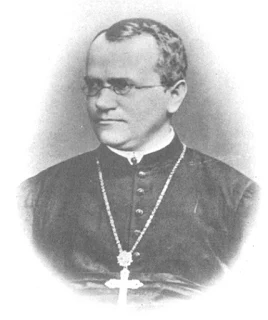Journal :by Victor Mushimbami
<script async src="https://pagead2.googlesyndication.com/pagead/js/adsbygoogle.js?client=ca-pub-5632014805880740"
crossorigin="anonymous"></script>
<!-- Global site tag (gtag.js) - Google Analytics --> <script async src="https://www.googletagmanager.com/gtag/js?id=G-KK3RM426QN"></script> <script> window.dataLayer = window.dataLayer || []; function gtag(){dataLayer.push(arguments);} gtag('js', new Date()); gtag('config', 'G-KK3RM426QN'); </script>
google() // Google's Maven repository
classpath 'com.google.gms:google-services:4.3.3'
To grow tall and dwarf pea plants, I would need to take some precautions. First, I would obtain two pure seeds of tall and dwarf pea plants. To test the purity of the tall pea seeds, I would plant them and let them self-pollinate. Then, I would collect the seeds and plant them again to see if they produce only tall pea plants. This would take some time, but it is the only way to ensure the purity of the seeds. (Rye, et al., 2016)
Second, I would do the same with the dwarf pea seeds. I would plant them, let them self-pollinate, collect the seeds, and plant them again to see if they produce only dwarf pea plants. I would repeat this process for as many generations as possible, because some traits might skip one generation, especially the first one, which I would call “F1”. This would also apply to the tall pea plants. (Rye, et al., 2016)
Once I am sure that both the tall and dwarf pea plants are pure, I would plant two more pea plants from the seeds. One would be from the tall and the other from the dwarf. I would label them as “T” for tall and “t” for dwarf. I would plant them in separate locations to prevent self-pollination or cross-pollination. (Rye, et al., 2016)
F2 GENERATION OBSERVATION
The first generation had tall pea plants dominating and dwarf pea plants in a recessive pattern. I observed that the genes were kept separate in the first generation and manifested in the second generation. Uopeople (2021) reports: “Here are the findings in the second generation: plant phenotypes in the F2 generation: 2706 tall/inflated, 930 tall/constricted, 888 dwarf/inflated, and 300 dwarf/constricted.”
There are tall/inflated plants in the second generation. I cross-pollinated the F1 generation, where the tall trait dominated and the inflated trait was recessive. In the second generation, I have the following ratio: 1:2:1, which is: TT = 25%; Ti = 50% and ii = 25%. These are the percentages of tall/inflated plants in the second generation of 2706 tall/inflated pea plants. This gave me the ratio of 2:1:1.
In the 930 tall/constricted pea plants, I have the following ratio and percentages: TT = 25%; Tc = 50% and cc = 25%. This brought me to the ratio of 1:2:1.
In the 888 dwarf/inflated pea plants, I had a percentage and ratio of: dd = 25%; di = 50% and ii = 25%. This led me to the ratio of 1:2:1.
Lastly, in the 300 dwarf/constricted pea plants, I had the following percentage and ratio: dd = 25%; dc = 50% and cc = 25%. This led me to the ratio of 1:2:1.
CONCLUSION
The ratio is consistent with Mendel’s law. Whichever method we use, it still gives the same generation of pea plants. The trait skips the first generation and appears in the second generation. This means that the gametes were not blended in the first generation or mixed to form a new generation. Instead, the gametes were kept separate and distinct. The tall pea plants are said to be dominant and the gametes that did not show in the second generation are said to be recessive. Being recessive does not mean they were lost. (Rye, et al., 2016)
The pea plant parents must be kept pure from all errors. They must be in a place where cross-pollination cannot occur through the wind. The gametes are carried to the stigma, which Rye, et al. (2016) call “a sticky organ that traps pollen and allows the sperm to move down the pistil to the female gametes (ova) below” (Biology: Mendel’s experiment). If the anthers are not removed, self-pollination would occur and cause errors in the experiment.
REFERENCE
Rye, C., Wise, R., Jurukovski, V., DeSaix, J., Choi, J., Avissar, Y. Biology. https://openstax.org/books/biology/pages/12-1-mendels-experiments-and-the-laws-of-probability
Uopeople, (2021). Learning guide 5: Introduction to Biology. https://my.uopeople.edu/course/view.php?id=5447

.jpeg)

Comments